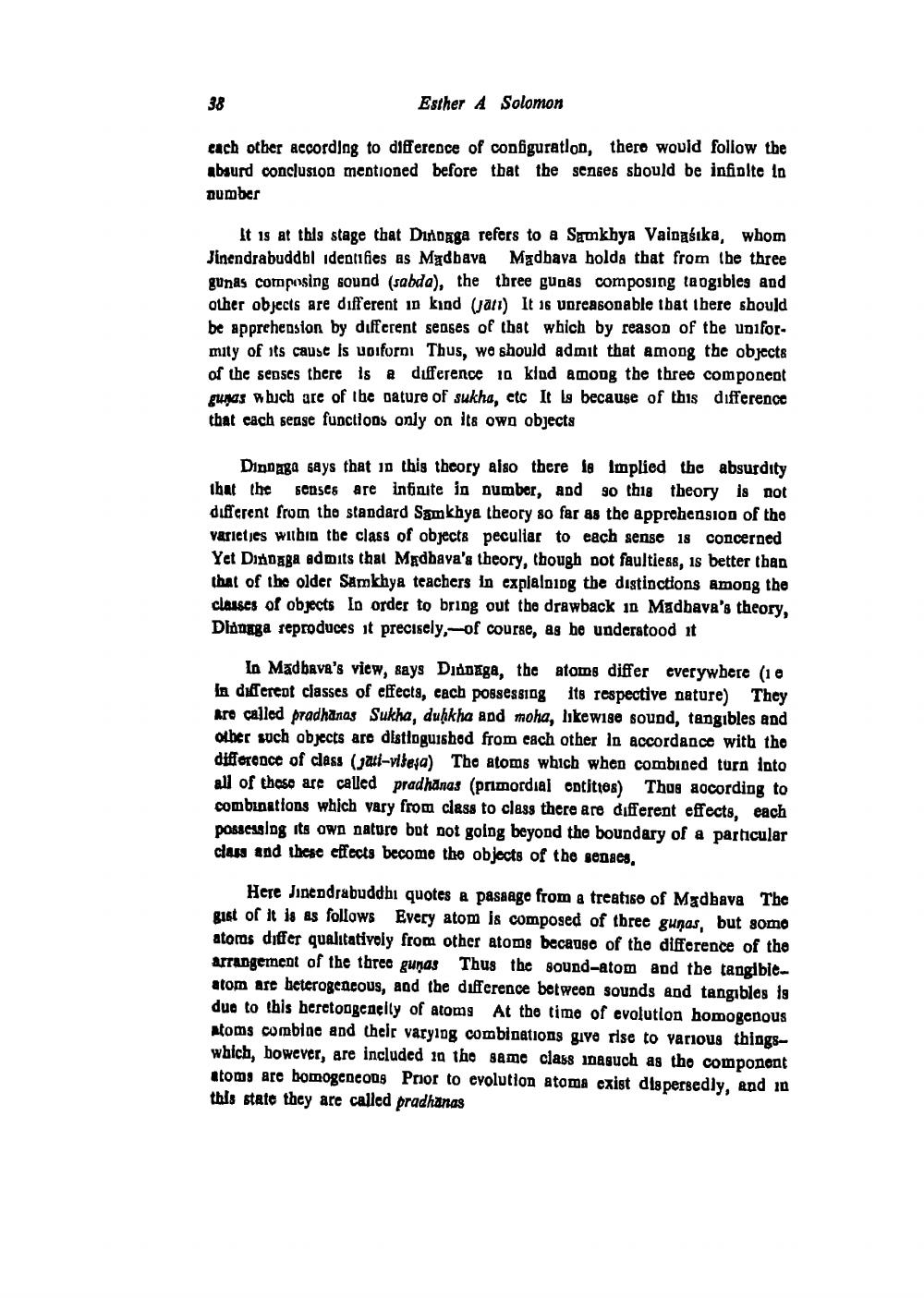________________
Esther A Solomon
each other according to difference of configuration, there would follow the absurd conclusion mentioned before that the senses should be infinite lo number
38
it is at this stage that Dunnaga refers to a Samkhya Vainasika, whom Jinendrabuddbl identifies as Madhava Madhava holds that from the three gunas composing sound (sabda), the three gunas composing tangibles and other objects are different in kind (jati) It is unreasonable that there should be apprehension by different senses of that which by reason of the uniformity of its cause is uniformi Thus, we should admit that among the objects of the senses there is a difference in kind among the three component gunas which are of the nature of sukha, etc It is because of this difference that each sense functions only on its own objects
Dinnaga says that in this theory also there is Implied the absurdity that the senses are infinite in number, and so this theory is not different from the standard Samkhya theory so far as the apprehension of the varieties within the class of objects peculiar to each sense 18 concerned Yet Dinnaga admits that Madhava's theory, though not faultless, is better than that of the older Samkhya teachers in explaining the distinctions among the classes of objects In order to bring out the drawback in Madhava's theory, Diangga reproduces it precisely, of course, as he understood it
In Madbava's view, says Didanga, the atoms differ everywhere (10 in different classes of effects, each possessing its respective nature) They are called pradhanas Sukha, dukkha and moha, likewise sound, tangibles and other such objects are distinguished from each other in accordance with the difference of class (jati-viteja) The atoms which when combined turn into all of these are called pradhanas (primordial entities) Thus according to combinations which vary from class to class there are different effects, each possessing its own nature but not going beyond the boundary of a particular class and these effects become the objects of the senses,
Here Jinendrabuddhi quotes a pasaage from a treatise of Madhava The gist of it is as follows Every atom is composed of three gunas, but some atoms differ qualitatively from other atoms because of the difference of the arrangement of the three gunas Thus the sound-atom and the tangibleatom are heterogeneous, and the difference between sounds and tangibles is due to this heretongeneity of atoms At the time of evolution homogenous atoms combine and their varying combinations give rise to various thingswhich, however, are included in the same class inasuch as the component atoms are homogeneous Prior to evolution atoma exist dispersedly, and in this state they are called pradhanas




